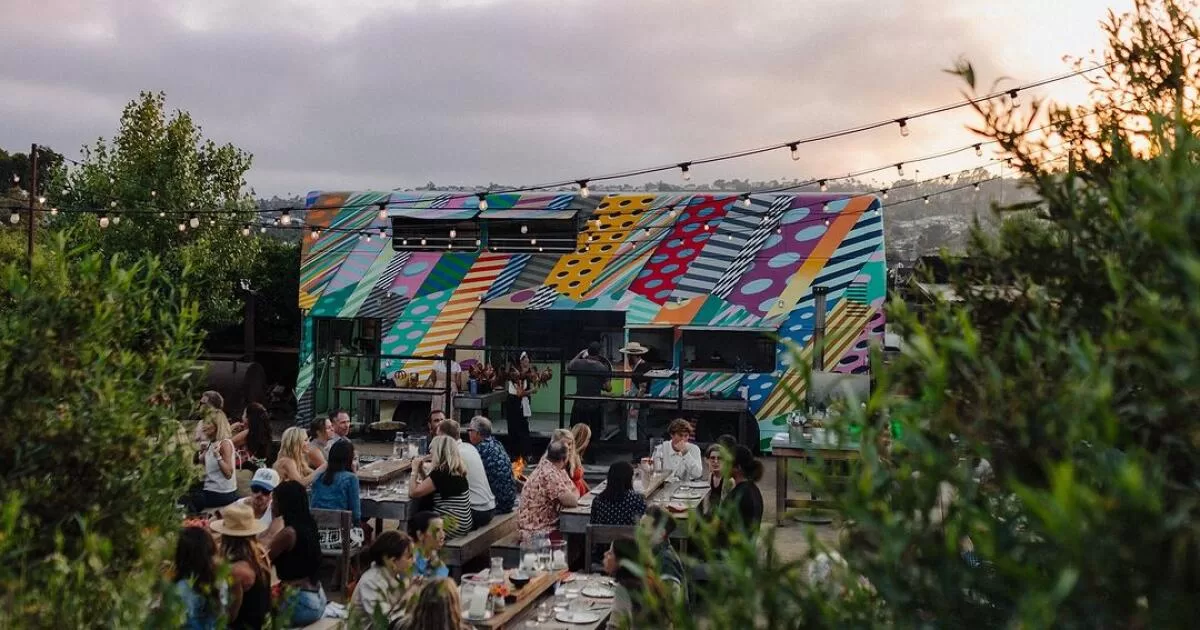The little train station in San Juan Capistrano sits right in the heart of town. To get from the historic Los Rios Street district to the mission and the rest of town, you must cross its tracks on foot. When the bells ring, signaling the train’s arrival, you’ll see children with parents and grandparents, young couples walking their dogs and locals and tourists alike, all gathering to watch. It’s a rarity in our fast-paced world to take a few minutes for something so simple as marveling at a train making a stop.
Located less than 60 miles south of Los Angeles (just an 80-minute ride on Amtrak’s Pacific Surfliner), San Juan Capistrano may come across as small and sleepy enough that watching trains is a pastime. But its proximity to the ocean — it’s just four miles inland — and its long, fascinating history give the city of 34,000 an enthralling, vibrant feel.
San Juan Capistrano, named for the Italian saint John of Capistrano, is a microcosm for the history of California and much of the West. The region was inhabited by the Indigenous Acjachemen people long before Spanish colonizers (led by Catholic priest Junípero Serra) built a mission and began forcing the Acjachemen to convert to Christianity. They did so primarily by imposing baptisms beginning in 1776. Some baptized workers and mestizo families connected to the mission sometimes lived nearby in adobe houses, one of which (the Ríos house on Los Ríos Street) is still inhabited by descendants of the original builders. The town grew as the mission grew, and it became an agricultural community where large numbers of cattle, sheep and horses were herded. Eventually, with California statehood in 1850 and the introduction of the railroad in 1894, the town further modernized.
There are nearly 100 historical markers around town, denoting the significance of various people and places. One special gem of the area is Los Rios Street, the birthplace of Orange County and the oldest continually inhabited neighborhood in the state. The San Juan Capistrano Historical Society, in the Garcia/Pryor home built between 1870 and 1880 (now the O’Neill Museum), keeps much of the town history alive with photos, books and documents, and offers tours every Saturday at 1 p.m.
Walking around town, you’ll see swallows everywhere. Swallows are depicted in murals, swallow merchandise is available for purchase and swallows are included in the decor in many stores. That’s because the migratory bird makes its way from Argentina to San Juan Capistrano every March. There’s even a popular song about it written by Leon René, “When the Swallows Come Back to Capistrano,” which climbed the charts in 1940 and was recorded by Glenn Miller and Elvis. The birds’ arrival is celebrated with the annual Swallows Day Parade, one of the largest nonmotorized parades in the United States.
For decades people flocked to San Juan Capistrano for the mission. As impressive as the mission is (and truly, it is amazing), there weren’t many other draws for outsiders. Locals knew about a few hot spots but otherwise the town remained mostly a historical landmark. Now things are changing. Many older and underutilized properties have been purchased by the Almquist development company. It renovated the Capistrano Plaza building (now the home to bustling restaurants such as Heritage Barbecue, Mayfield and Breezy) and is responsible for the development of an expansive 60,000-square-foot shopping and dining destination called River Street Marketplace. Almquist is working on bringing to town a hotel, an apartment complex and a concert hall.
For as much as San Juan Capistrano’s history is being passed down to new generations (it’s common to see families hovering over historical plaques and pointing out landmarks around town), the boom in development offers a great opportunity to expand the interest here. These days, one might visit San Juan Capistrano for the enticing new restaurants and innovative gathering spaces. And while here, they also might learn something about how California became what it is today.
